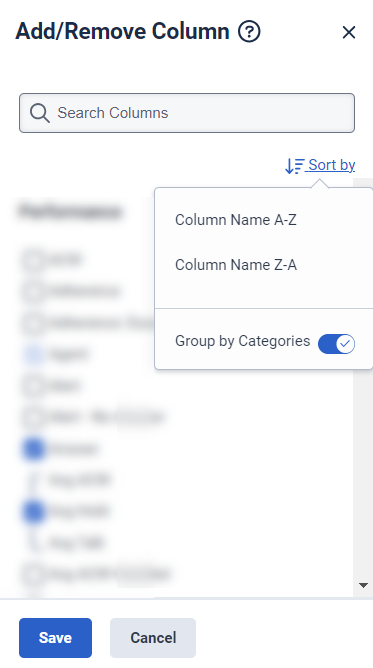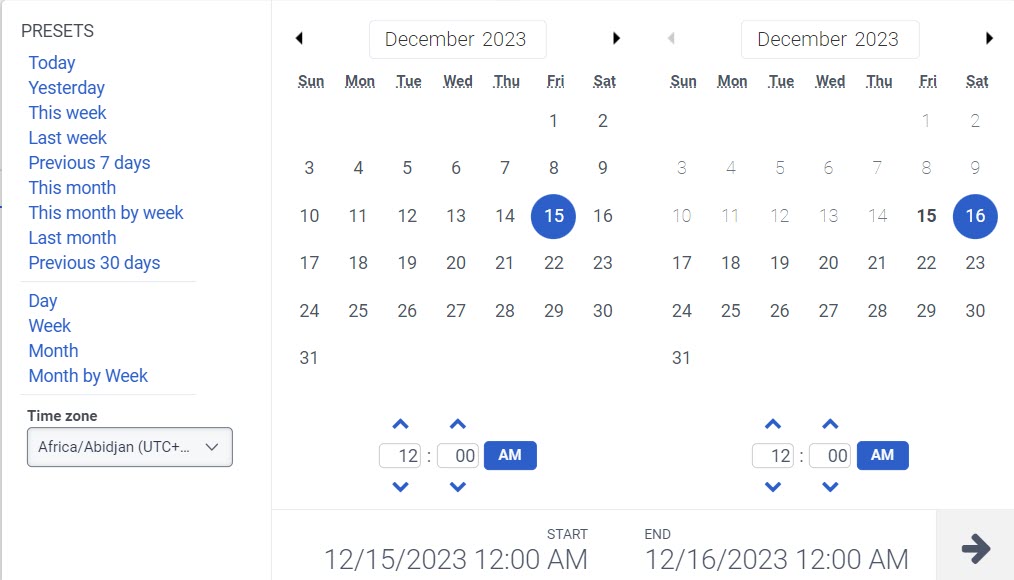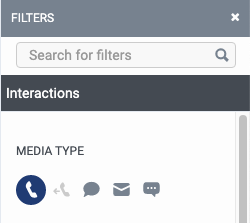Data Actions Performance Summary view
Requires the following permission:
- Integrations > Action > View or Bridge > Actions > View
The Data Actions Performance Summary view displays current and historical metrics and data about data actions. For more information, see About the data actions integrations.
Available columns
To view the available columns, see Data Actions Performance Summary view section in the View available columns in performance views by category article.
To view the consolidated list of available columns in the performance views, see Consolidated view of available columns in performance views.
To view the list of available columns in the performance views by category, see View available columns in performance views by category.
Set a default time zone in the workspace
You can set the default time zone in the analytics workspace before viewing any analytics view.
To set the default time zone in the workspace, follow these steps:
- Click Performance > Workspace.
- On the left side, from the Time zone drop-down menu, select the required time zone as the default time zone for the analytics workspace.
| To | Do this |
|---|---|
| Display the view | Click Performance > Workspace > Other > Data Actions Performance. |
| Filter by category |
On the upper left, click the Filter user(s) search icon . Enter a category name. The suggested names appear in the search results. |
| Customize the view using interaction filters | On the upper right, click the Toggle filters panel icon |
| Modify the columns that appear in the view | See show, hide, and rearrange columns below. |
| Refresh the view | To display the most current data, click Refresh . |
| Save the view with your filter and column settings | Click Save . |
| Export the data in the view | Click Export . |
View statistics for a specific data action
To see data for a specific data action, in the Action category row, click . The data actions associated with the action category appear under the category row. For more information about a specific data action, see Data Actions Performance Detail view.
Customize the view
To show only certain data, customize the Data actions performance summary view using any combination of filters.
| Filter | Description |
|---|---|
| Response status |
A list of observed HTTP status codes that are returned in response to data action execution. The list varies depending on what is observed within the dataset. |
More information about making these customizations is available in the following sections.
To customize analytics views, use the date filter.
To filter metrics by date or configure a custom date range, use presets. When filtering metrics for this view, select any custom date range up to one month.
To use a preset to filter metrics, complete the following steps:
- Click the date to display the date filter.
- In the Presets list, select a preset date option.
Date presets
| Presets | Description |
|---|---|
| Today | Shows data for the time period that includes the current interval. |
| Yesterday | Shows data for the previous day. |
| This week | Shows data for a Sunday through Saturday time period. |
| Last week | Shows data for the previous week and Sunday through Saturday. |
| Previous 7 days | Shows data for the previous seven days. |
| This month | Shows data for the current month with no extra days. |
| This month by week | If the month does not start on Sunday or end on Saturday, shows data for the current calendar month starting on Sunday and ending on Saturday including extra days. |
| Last month | Shows data for the previous calendar month with no extra days. |
| Previous 30 days | Shows data for the previous 30 days. |
| Day | Shows data for a single 24-hour day. |
| Week | Shows data for a Sunday through Saturday time period. |
| Month | Shows data for the exact month with no extra days. If the current month is selected, you see the data up to the current date. |
| Month by Week | If the month does not start on Sunday or end on Saturday, shows data for a calendar month starting on Sunday and ending on Saturday including extra days. |
To use a custom date range to filter metrics, complete the following steps:
- To display the date filter, click the date.
- Select a start date and an end date on the calendar, and click the filter arrow .
To view data for a different time period using the same date presets, click the arrows on either side of the date display. ![]()
For example, to view data for the previous day, click the Day preset, and then click the arrow on the left side of the date.
To view data for a different time zone using the same date presets, from the Time zone drop-down menu, select the required time zone. You can create and save reports with the same selected time zone.
- When filtering you can select more than one media type. Click the relevant media type to select or deselect the type.
- You cannot select the voice and callback types at the same time.
- If you select voice, the callback option will be deselected. If you select callback, the voice interaction will be deselected.
- The available media types may vary from those shown above.
The selected media type icon is displayed above the column headers. For more information about various media types and their settings, see the Set behavior and thresholds for all interaction types section in the Create and configure queues.
To show or hide columns:
- Click the Pick columns icon on the right side. The Add/Remove Column pane appears.
- (Optional) To sort the columns in ascending or alphabetical order, click Sort by > Column Name A-Z.
- (Optional) To sort the columns in descending or reverse alphabetical order, click Sort by > Column Name Z-A.
- (Optional) To categorize or uncategorize the columns, click Sort by and enable or disable the Group by Categories toggle. Click the image to enlarge.

- Search or scroll to select the columns you want to view. Note: You can also use keyboard navigation to choose the columns.
- Click Save. The selected columns appear on the screen. Note: The column selections appear only after saving the changes and do not apply to the table immediately.
To rearrange the columns, click a column header and drag it.
To reset a view to default column settings, click Reset view to defaults ![]() .
.
You can select up to 20 columns.
For more information about the metrics shown in the columns, see the Available Columns section in this article.
Data in the view can be displayed in a chart. To view the chart, click the Show/Hide chart icon .



